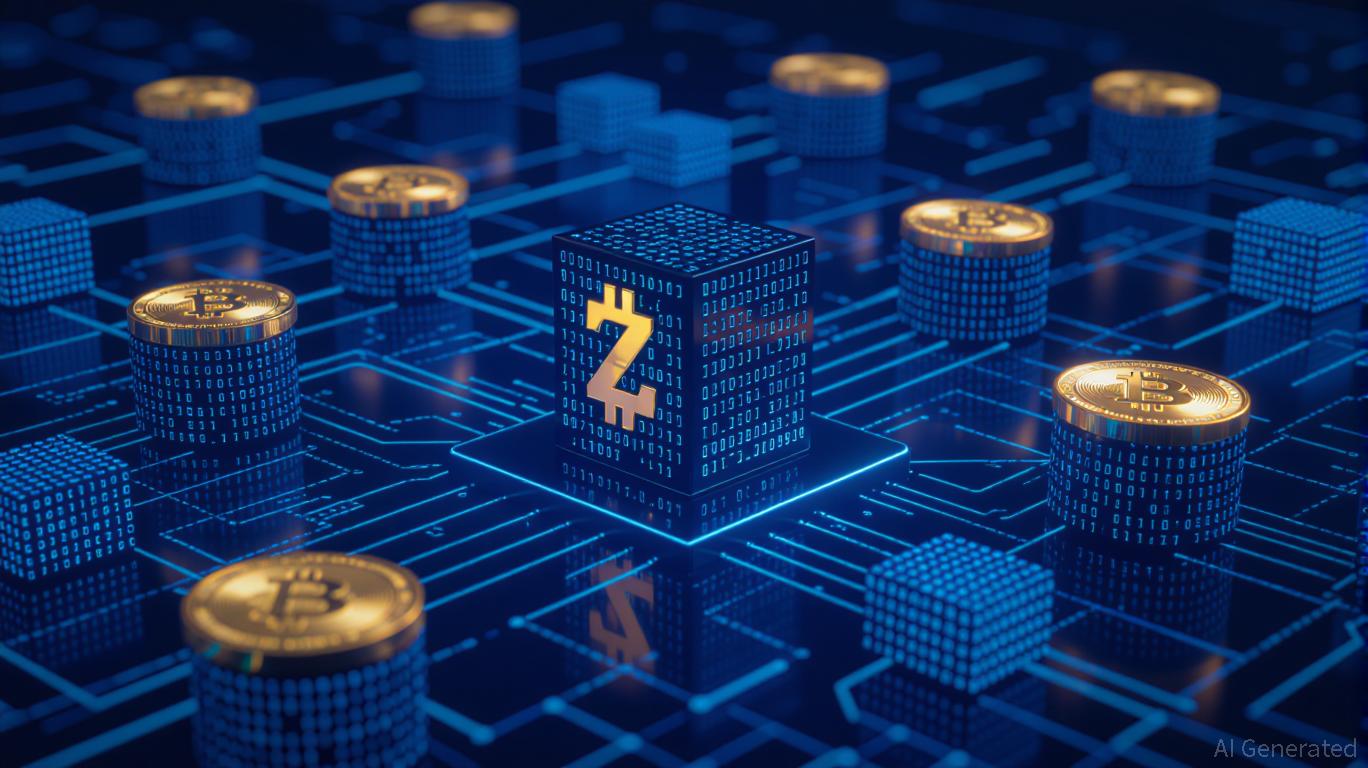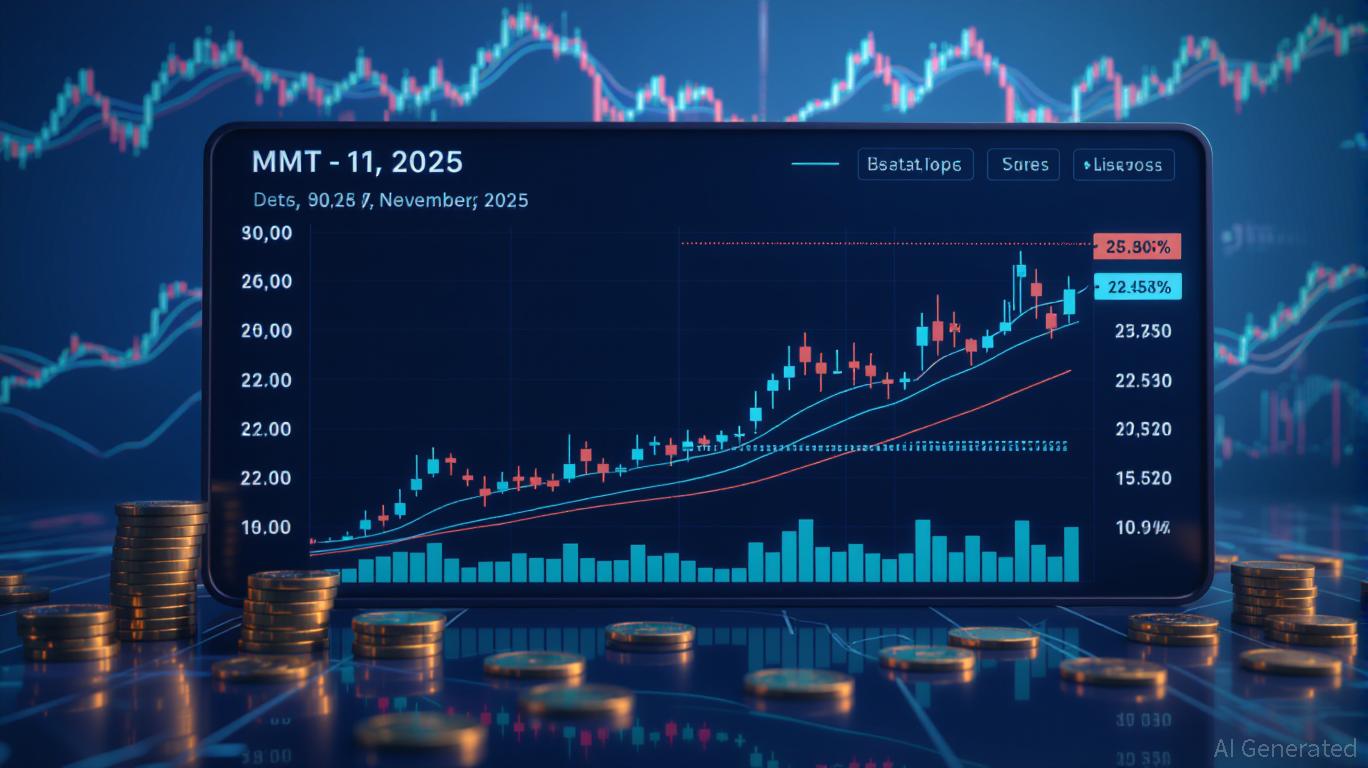Zcash Halving and Its Effects on the Market: Limited Supply, Investor Confidence, and the Value of Privacy
- Zcash's 2025 halving cut block rewards by 50%, driving a 750% price surge to $680 amid growing demand for privacy-focused assets. - Unlike Bitcoin's store-of-value narrative, Zcash's 28% shielded supply via zk-SNARKs created a "privacy premium" during crypto downturns. - Zcash's PoS transition stabilized mining economics, attracting ESG investors while Bitcoin's PoW model faces energy cost volatility. - Institutional adoption (Grayscale Zcash Trust, Zashi wallet) and regulatory resilience position Zcash
Halving events, which reduce miners' block rewards and restrict the supply of new coins, have long fascinated the cryptocurrency community for their impact on prices. Bitcoin’s halvings in 2012, 2016, and 2024 are often cited as prime examples of how engineered scarcity can shape both market sentiment and asset valuation. Now, with Zcash’s halving scheduled for 2025, the privacy-focused altcoin presents a unique opportunity to observe how these supply shocks play out in a different context—one where privacy and utility are central, with potential consequences for both its price path and the broader adoption of blockchain technology.
Scarcity and the Privacy Premium
Zcash’s 2025 halving decreased block rewards from 3.125
Bitcoin’s price rallies after halvings—like the surge to $64,900 in 2020—are often credited to its reputation as a hedge against fiat currency debasement.

Miner Economics: PoW vs. PoS and the Post-Halving Adjustments
Bitcoin’s 2024 halving
Bitcoin’s reliance on PoW remains a double-edged sword: it strengthens network security and scarcity, but also exposes miners to fluctuating energy prices and geopolitical risks. Zcash’s adoption of PoS illustrates how alternative cryptocurrencies can adapt to post-halving realities, potentially offering steadier returns for participants.
Investor Sentiment and the Privacy Narrative
The 2025 halving
Institutional interest has further enhanced Zcash’s reputation. The Grayscale Zcash Trust, with $137 million under management, and
The Road Ahead: Zcash's Position in the Crypto Ecosystem
Following its 2025 halving, Zcash’s market capitalization climbed to $10.63 billion—overtaking Monero—but it still lags far behind Bitcoin’s $1.9 trillion dominance. Bitcoin’s established role as a store of value and its integration into mainstream finance, such as spot ETFs, remain significant hurdles. Nevertheless, Zcash’s emphasis on privacy and enterprise use cases positions it as a valuable addition to a diversified crypto portfolio.
Some analysts, including Arthur Hayes, have speculated that Zcash could eventually reach $10,000, though such predictions are highly uncertain. More realistic goals may involve Zcash maintaining its 28% shielded supply and expanding its institutional partnerships. Regulatory challenges remain, but increasing demand for privacy could make Zcash’s halving a catalyst for renewed interest in privacy-focused blockchains.
Conclusion
Zcash’s 2025 halving highlights the shifting relationship between scarcity, utility, and investor sentiment within the crypto sector. While Bitcoin’s halving cycles offer a blueprint for understanding supply-driven price changes, Zcash’s privacy features and shift to PoS introduce new dynamics. For investors, the main lesson is that scarcity is only part of the equation; a blockchain asset’s value increasingly depends on its ability to solve real-world problems—whether through privacy, scalability, or regulatory compliance. As the digital asset space evolves, Zcash’s halving provides a preview of a future where privacy is not just a niche, but a core asset class.
Disclaimer: The content of this article solely reflects the author's opinion and does not represent the platform in any capacity. This article is not intended to serve as a reference for making investment decisions.
You may also like
Solana News Today: "Solana Treasury Allocates Billions in Staking, Offering 7.7% Returns Amid Ongoing Market Skepticism About Crypto Rebound"
- Upexi , a Nasdaq-listed Solana treasury firm, reported $66.7M net income in Q1 2026, driven by $78M in unrealized gains from its 2.18M SOL holdings. - The Solana treasury sector now holds 24.2M SOL ($3.44B), with Upexi ranking fourth and staking yields averaging 7.7% as a corporate asset class. - Market volatility triggered defensive moves like Upexi's $50M share buyback, while its stock trades at 0.68x NAV amid broader crypto skepticism. - Solana's on-chain activity outpaces Ethereum , with TVL reaching

COAI's Significant Price Decline: The Result of Leadership Instability, Ongoing Legal Issues, and Ambiguous Regulatory Environment
- COAI Index fell 88% YTD in 2025, driven by AI/crypto AI sector selloff amid governance failures and regulatory uncertainty. - C3.ai's leadership crisis and unresolved lawsuit eroded investor trust, compounding COAI's decline as index cornerstone. - Vague CLARITY Act left AI-based crypto projects in legal gray zones, triggering risk-off trading toward established tech stocks. - C3.ai's $116.8M Q1 loss and sector-wide weakness highlighted structural risks despite 21% revenue growth. - Analysts debate if CO

MMT Value Forecast and Investor Outlook for November 2025: Evaluating Reliability During Economic Changes
- MMT token surged 1,300% in Nov 2025 due to Binance listings, airdrops, and institutional investments. - 1607 Capital increased MMT-linked fund stake by 84.7%, but dividend sustainability remains unclear. - Fed policy and missing inflation data (due to 2025 government shutdown) cloud macroeconomic alignment. - MMT's volatility ($4.40 to $2.54) highlights speculative nature despite structural catalysts. - Long-term credibility depends on macroeconomic clarity and Fed policy shifts, not just exchange-driven

LUNA Declines by 0.62% as Ongoing Yearly Downtrend Persists in Uncertain Market Conditions
- LUNA fell 0.62% on Nov 16, 2025, continuing an 80.61% annual decline amid crypto market volatility. - The drop reflects macroeconomic pressures, regulatory scrutiny, and waning investor risk appetite in digital assets. - Technical analysis shows broken support levels and weak buying pressure, indicating a prolonged bearish phase. - Backtesting reveals sharp declines often trigger panic selling and sector-wide market erosion, compounding losses. - Prolonged depreciation risks eroding investor confidence u